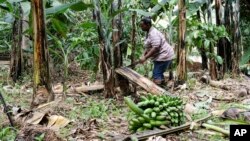In many respects, countries around the world are reducing or even eliminating obstacles holding back global advancement toward peace and prosperity, as set out in the United Nations’ 17 Sustainable Development Goals, or SDGs. According to the UN, governments are working to bolster economic stability, leading the way on climate action and expanding social protections.
That’s the good news. The bad news is that fewer than 20 percent of the SDGs are on track. Poverty remains the defining challenge of our time, food insecurity has sky-rocketed, and humanitarian crises and displacement are growing.
For our part, the United States remains committed to a vision of a sunnier future in which people do not go hungry, everyone has access to quality healthcare and education, and democracies deliver a stronger, fairer society for all, said Jonathan Shrier, U.S. Deputy Representative to the UN Economic and Social Council.
“We are tangibly demonstrating this commitment to drive development progress, investing more than $150 billion in the first three years of the Biden Administration alone. And mobilizing billions more in private sector investment to accelerate progress towards the sustainable development goals.”
“We are investing in global food security by helping partner countries build more resilient and sustainable food systems, boosting food production and strengthening their capacity to withstand future shocks,” said Ambassador Shrier.
“This includes $48 billion in investments in global health including nearly $16 billion dollars to end the acute phase of the COVID-19 pandemic and strengthening our shared capacity to prevent, prepare, and respond to global health threats.”
“The United States also remains the world’s leading bilateral donor of life saving humanitarian assistance,” said Ambassador Shrier.
“The United States will continue to seek new ways to leverage our investments to mobilize additional financing for development from all sources, both public and private, domestic and international.”
“Societies that respect human rights and worker rights, uphold the rule of law and access to justice, promote gender equality, tackle corruption and illicit finance, and support inclusive, accountable governance for all citizens are best equipped to deliver durable development gains and a more peaceful, prosperous, and inclusive future for their citizens,” said Ambassador Shrier.
“No country can do this alone; we seek to expand a diverse set of partnerships on the basis of upholding the inherent dignity and rights of all human beings and making good on our pledge to leave no one behind.”














